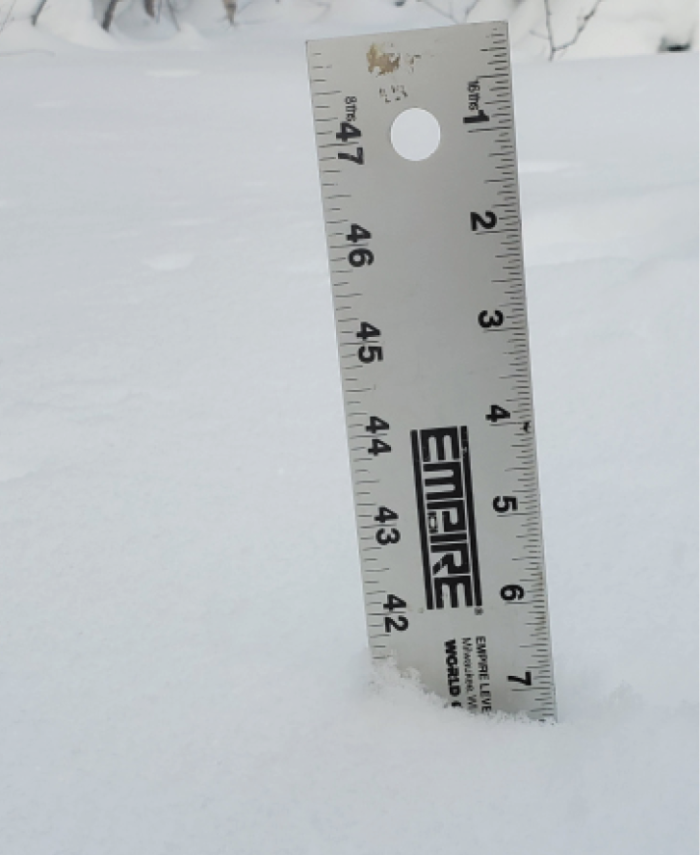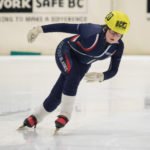This winter can be easily summed up with two words: snowy and mild. Once again, we have deep snow across the Northern Wilds, but the bitter cold that typically tests our mettle has been mostly absent or of short duration. The snow, on the other hand, started in October and, at this writing, just keeps coming down.
While the lack of cold may be a comfort to some folks, others find it frustrating. Frozen lakes, covered with an insulating blanket of deep snow, have been slow to make thick ice and prone to slushy conditions, challenging ice anglers, snowmobilers, skiers and loggers. Mild conditions and a bountiful crop of conifer cones have prompted many of our usual winter birds to remain farther north, which is why you’ve seen few pine grosbeaks, redpolls and pine siskins at your feeders. The northern forest needs cold weather. Brutal cold snaps can devastate some invasive insect pests that damage native vegetation.
Deep snow isn’t unusual around Lake Superior. It is often a result of what is called the Lake Effect, where Superior’s expanse interrupts a winter storm’s progress and allows it to gather more moisture, which is deposited as snow. Along the Minnesota shore, where the lake usually remains open most of the winter, less snow falls near the lake, while greater amounts accumulate on the high ridges a few miles inland. This is why white-tailed deer migrate to the lake shore in winter, where large numbers may be seen in your yard or along Highway 61, especially in February and March. Whitetails, which migrated northward into what was traditionally woodland caribou habitat as European settlers altered the landscape through logging and clearing the forest for farming, are not well-adapted to deep snow. Wintering near the lake improves their odds of survival. While caribou have disappeared from all but the northernmost reaches of Lake Superior, another member of the deer family, the moose, has strong, long legs that allow it to navigate deep snow.
This winter, I’ve been monitoring snow depths near my home in Hovland for Minnesota DNR Wildlife. The agency shuttered its Grand Marais office a couple of years ago, leaving just the Two Harbors office to cover the entire North Shore. When Two Harbors area wildlife manager Nancy Hansen mentioned to me that no one was measuring snow depths in my neck of the woods these days, I offered to take up the task. Every weekend, I drive up the Arrowhead Trail with my four-foot steel ruler to measure the snow accumulation. It’s fun.
Winter snowfall totals are different than the depth of snowpack that covers the ground. Snowfalls settle and lose depth or melt and settle during thaws. Snowpack is what remains. Up here, by the end of winter the snowpack is usually a deep, dense blanket of white. Following Hansen’s guidance, I’ve found three places in the forest where the snow isn’t blocked by sheltering conifers. Stabbing the ruler into the snow several times, I come up with an average depth. I measure the same spots each week.
My first location is about a third of a mile from Lake Superior, where the Minnesota Pollution Control Agency has a station to monitor precipitation. The next one is about five miles inland among a stand of old growth white pines. The third is perhaps 12 miles inland at the intersection of the Arrowhead Trail and the Shoe Lake Road. For years, I’ve walked dogs on some quiet snowmobile trails at this location and been amazed how deep the snow becomes by March. Leave the packed trail and you’re wallowing in snow that is well over your waist.
We’re not there yet, but for this point in winter—the latter half of January at this writing—the snow is starting to get deep. Following a fall of more than a foot of fluffy snow, my most recent measurements were 31 inches at the MPCA site, 39 inches at the Pines and 41 inches at the Shoe Lake Road. I struggled to climb/crawl over the five-foot snowbank left by the county grader at the Pines. If the snow keeps coming down, negotiating the short distance from the road to my measuring spot will require snowshoes. I’m already looking to replace my four-foot ruler with a longer measuring stick.
While I’m curious to see just how deep the snow may become, my interest in deep snow is somewhat perverse. The deeper it gets, the longer it takes to melt in the spring, which can delay the onset of trout fishing by weeks. When the rivers eventually open up, they run cold and extra-high, making for poor fishing conditions. The plus side is that once the conditions improve, good trout fishing lasts well into the summer.
Climatologists and a lifetime of winter experience suggest that our snowiest months may still lie ahead. Even “normal” snows will continue to add up. Blizzards around the time of the Minnesota high school basketball and hockey tournaments in March are a tradition. Some may recall in 2013, we received over four feet of snow in April. In fact, this far north, it is unusual to see much bare ground until the end of that month. Sometimes snow cover stubbornly persists into May.
Given the mild temperatures so far this winter, perhaps spring will get an early start this year. But I’m not holding my breath. More likely, when the folks “down below” are welcoming the arrival of spring, I’ll still be heading up the Arrowhead Trail once a week with my trusty ruler. That’s when I’ll start fielding calls from spring-fevered trout anglers from points south seeking river reports. When I tell them there is over four feet of snow on the ground, they won’t believe me. They never do. Up here, we’ll be waiting for winter to disappear—inch by inch.




